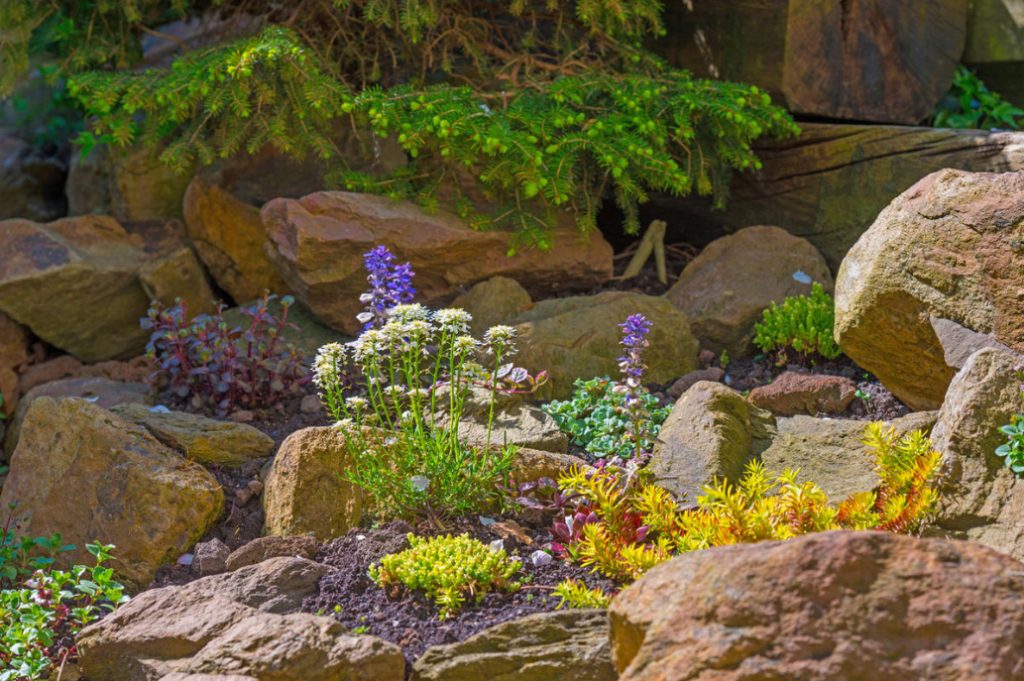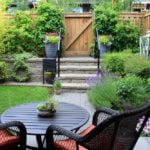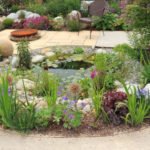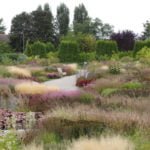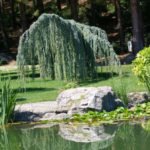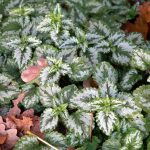Proper filling with garden crops is one of the most difficult tasks when creating a rockery. After all, plants must not only correspond to the peculiarities of life among the stones, but also harmoniously combine with each other and the surrounding space.
There are several, if not laws, then wishes for the selection of suitable plants. Let’s look at them from different points of view and determine the most successful options.
Sizes
It is necessary to carefully evaluate the appearance of the selected representative of the flora, which is determined by the height of the plant and the shape of its aboveground part. In rockeries, it is not recommended to use high (above 50 cm) plants that will close the stones, suppress neighbors, and stick out. Low plants will not break the harmony of size, decorate rockeries even with large stones.
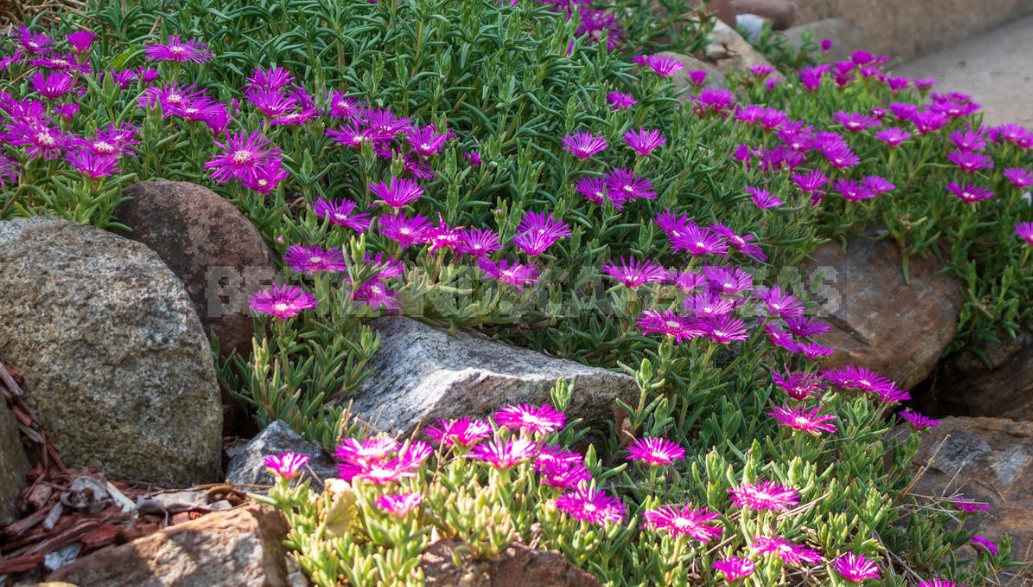
In reference books, the height of the herbaceous plant is indicated at the time of its mass flowering. Most perennials do not bloom for long, but their leaves are preserved. Therefore it is desirable to keep 2 parameters in mind:
- height of the peduncle during mass flowering;
- the height of the Bush after its end.
For example, the height of Heuchera sanguinea during flowering is 30-40 cm, and before flowering and after it is 15-20 cm. In species with short peduncles, such as Arabis, Aubrieta, Epimedium, the height does not change during the season.
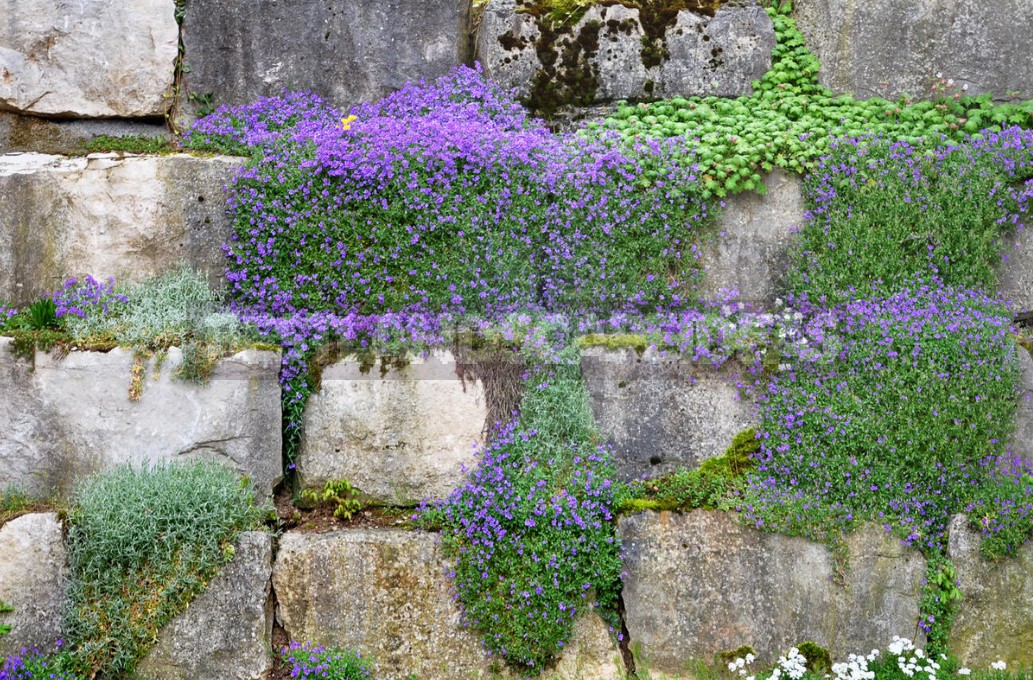
Thus, the height of the plant must be taken into account. For example, there are many ornamental drought – and frost-resistant Allium species that are suitable for growing among stones, including tall (50-70 cm) Allium aflatunense, Allium giganteum, Allium cristophii, and others. But we recommend paying attention to low Allium oreoprasum, such as Allium karataviense, Allium moly, Allium paradoxum, whose height is about 10-25 cm.
Of the many magnificent mountain geraniums — tall (Geranium endressii, Geranium platypetalum) and short (Geranium renardii, Geranium macrorrhizum) — the latter can be recommended for rockeries. The same principle is used in selecting Campanula, Tulipa, and others. So, it is excluded from planting among the stones of varietal Tulipa with high peduncles, but low species Tulipa, such as Tulipa greigii, are remarkable.
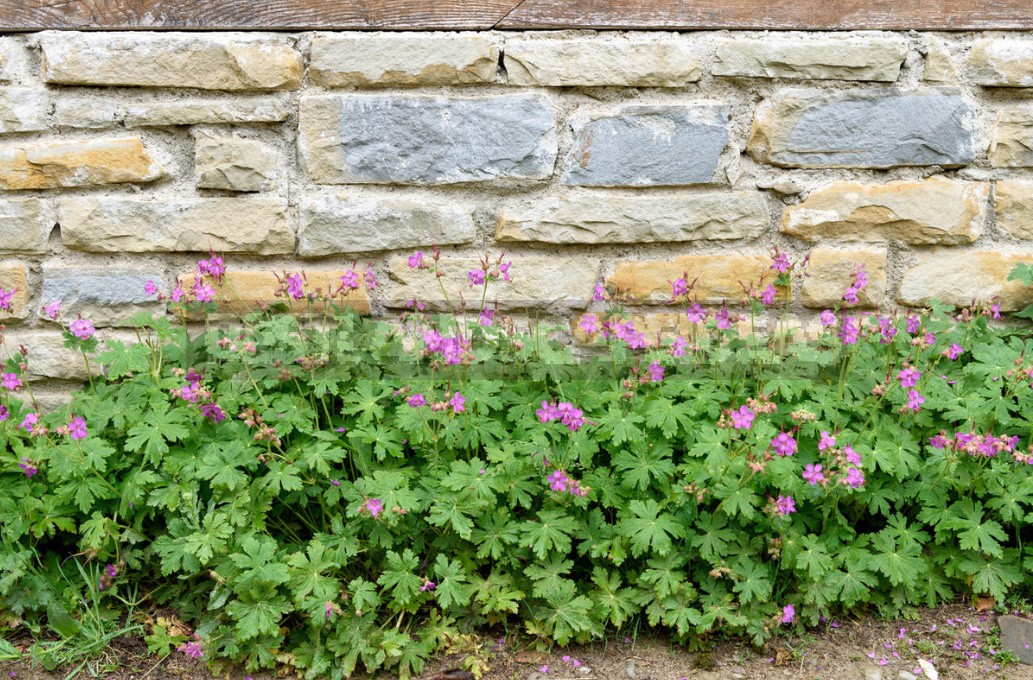
Form
The shape of the aboveground part of the plant is of great importance. For convenience of its description the following concepts are used:
- spherical-when the Bush looks like a ball;
- spherical (pillow-shaped) – in this case, the shoots form a flat at the bottom and rounded at the top of the Bush, as in Dianthus, Alyssum, Alchemilla, etc.;
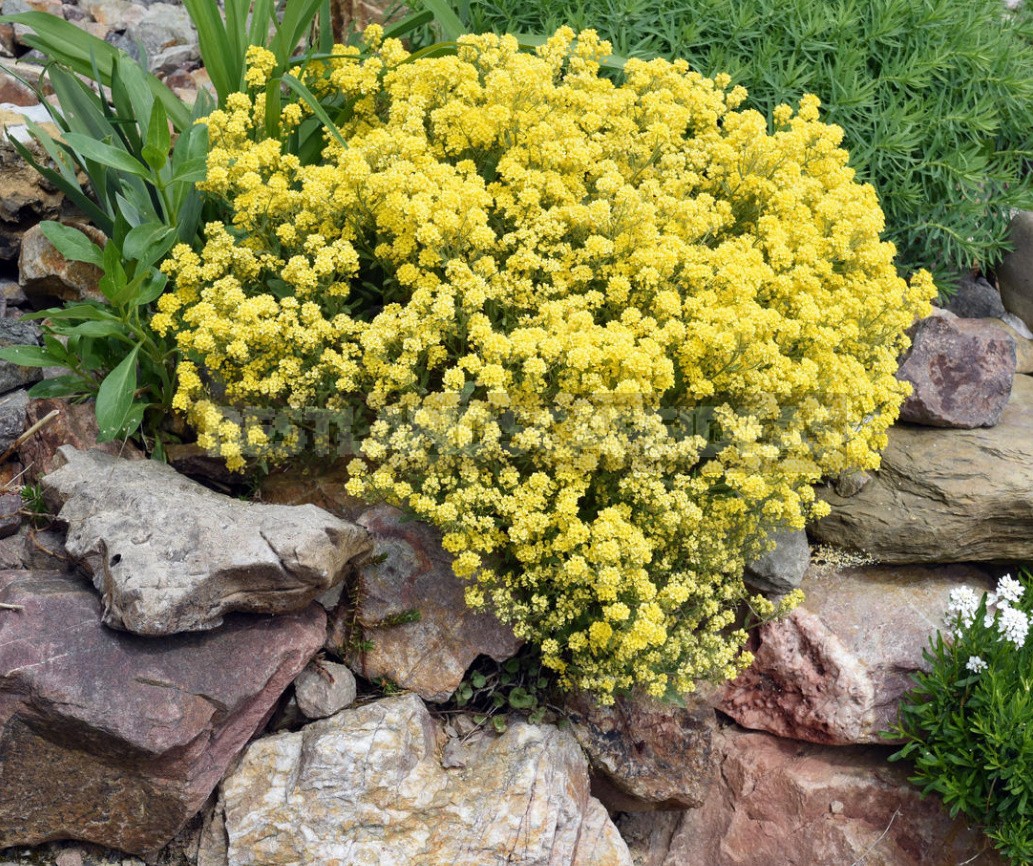
- pyramidal — above the rosette of large leaves, a narrow inflorescence, as in Aster alpinus, Filipendula vulgaris, etc.;
- the cone-shaped shape is determined by upward-pointing shoots that form an oval Bush-Dictamnus, Limonium;
- cylindrical can be called the form of a Bush with erect, leafy shoots that form an undeveloped Bush, as in Liatris, Leontopodium, Lavandula;
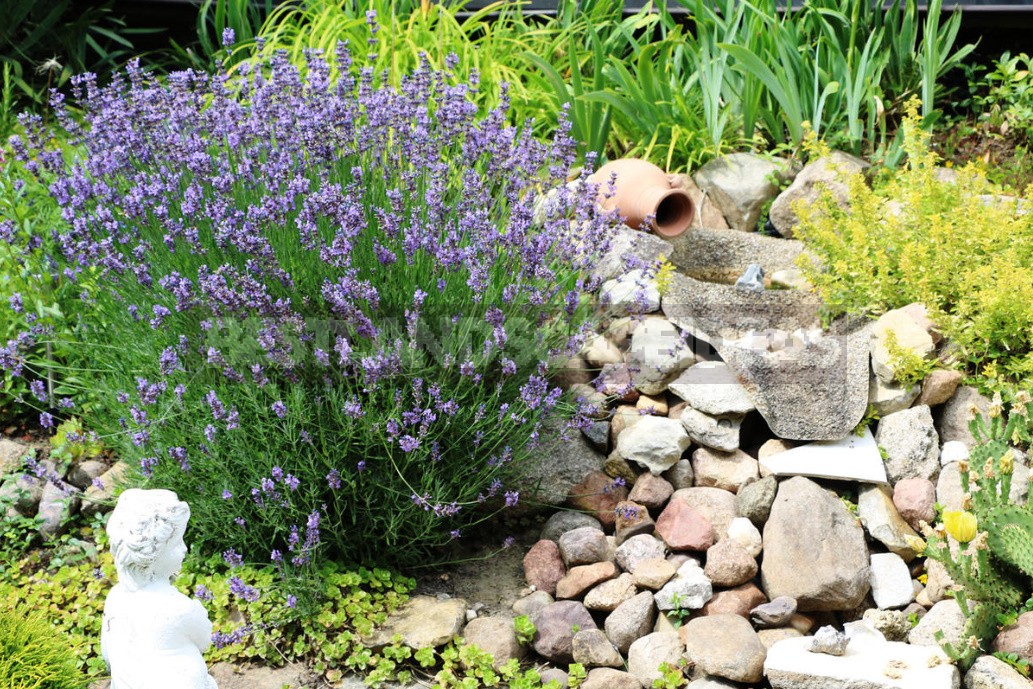
- the prostrate (creeping) form is determined by the leafy shoots pressed to the ground-Hyssopus, Phlox subulata, Sedum ewersii;
- hanging, hanging plant shoots form a Thymus, Cerastium, Vinca herbacea, Cystopteris bulbifera. These plants are especially interesting for decoration of retaining walls, terraced slopes. Species with weeping, drooping inflorescences, like Lathyrus latifolius, look spectacular among the stones.
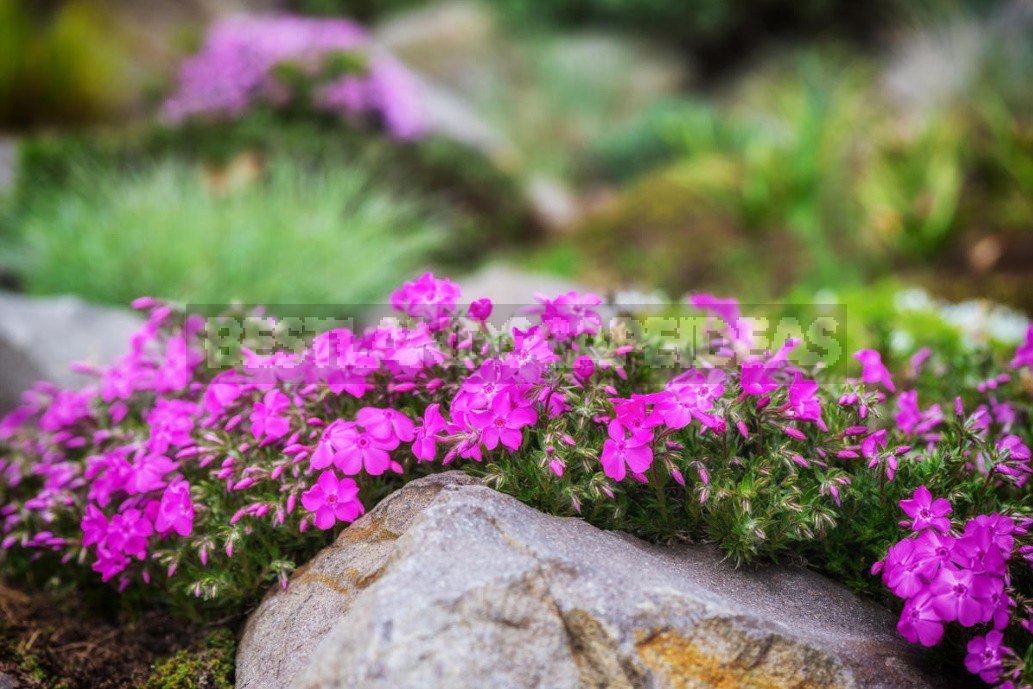
The impression is made not only by the shape of the plant, but also by its density and fullness of leaves. In some species, the Bush is dense, opaque, for example, in Campanula, Bergenia, Heuchera, Iberis. All ferns have openwork bushes and this makes them seem light. Also openwork transparent bushes in Pulsatilla, Adonis vernalis, etc.
Leaves
Special attention should be paid to the leaves — their size, shape, texture, color. For rockeries, it is better to choose plants with not very large, beautifully shaped leaves. The shape of the leaf can be different: rounded, like Bergenia and Heuchera; narrow falling, like Anthericum. Interesting openwork, strongly indented leaves of ferns, Astilbe, Dicentra, Filipendula vulgaris, etc.
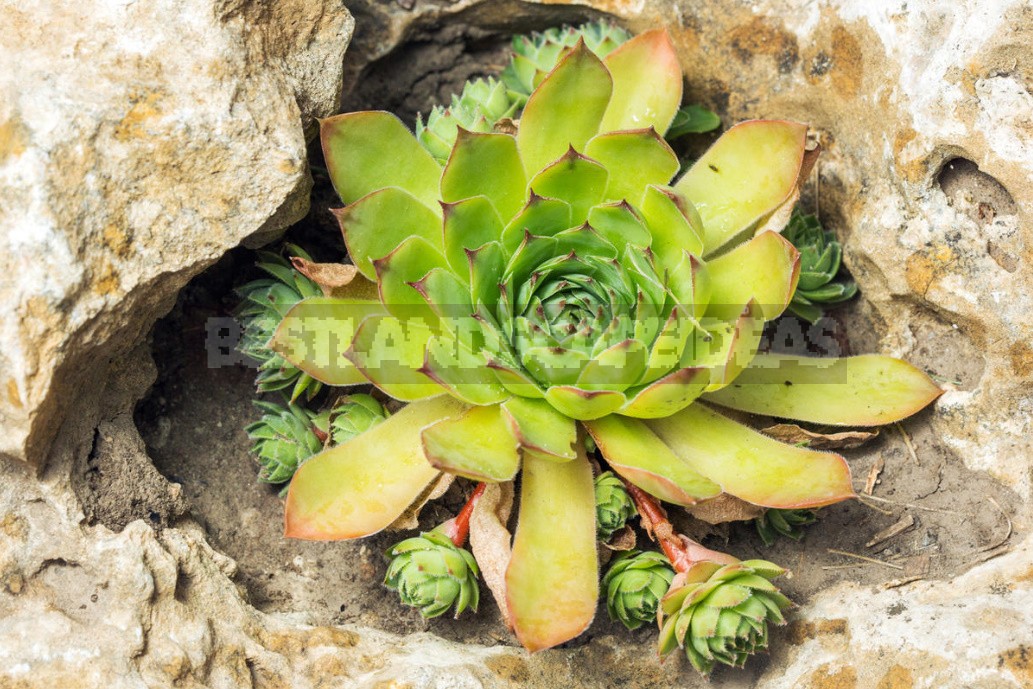
Expressive leaves with a clear texture. Dense, prickly leaves of Carlina acaulis; slightly pubescent leaves of Geranium macrorrhizum form dense patches, and rounded succulent leaves of Sedum and Sempervivum combine well with stones. The leaves of Stachys byzantina and Leontopodium, silvery with dense pubescence, give these plants an exotic appearance.
The color of the leaves
The foliage of different species differs not only in shape, but also in color. The most common green color is neutral, saturated, and comes in all shades from dark green in most Thymus, bright green in Bellis perennis, and light green in Alchemilla erythropoda. Plants that have silvery spots on their green leaves (Pulmonaria saccharata, Brunnera macrophylla) or silvery reflections (Lamium maculatum) attract attention.
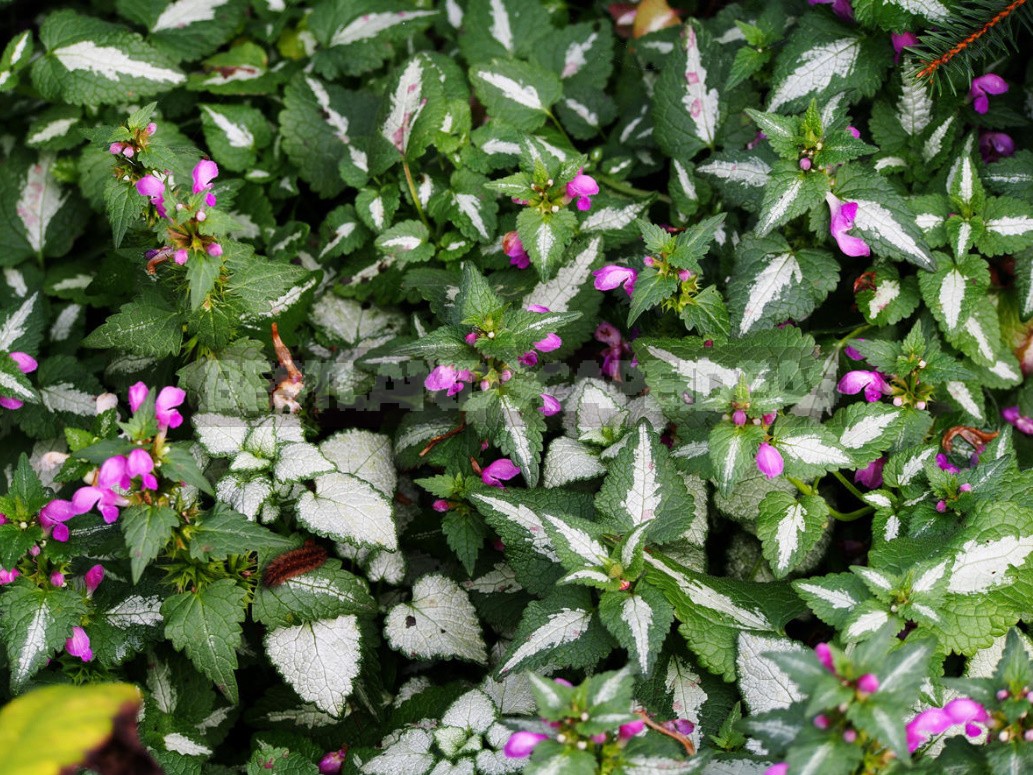
Green – the predominant background in flower beds-is combined with any other, but especially beautiful combination of dense green foliage with red flowers, for example, in Geranium sanguineum; bluish-green leaves with bright pink flowers in Dianthus gratianopolitanus; green with a silvery stripe of Crocus leaves with its striped flowers. In rockeries, where light stones often predominate, plants with silvery and bluish leaves are refined and harmonious.
As already noted, rockeries with their dry, well-drained rocky substrates are an ideal place for growing dry-loving plants. It is among them that there are so many species with pubescent, silvery leaves (Anaphalis, Antennaria dioica, Artemisia stelleriana, Stachys byzantina, etc.).
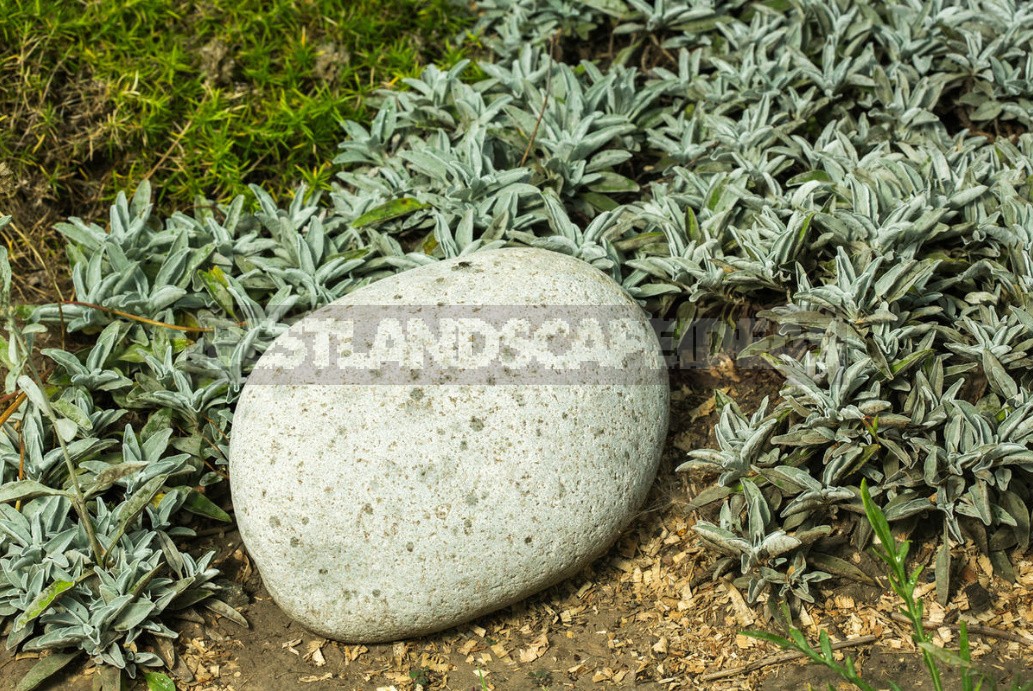
Species with grayish-bluish leaves are widely represented among Dianthus, Lavandula, Iris, and others. The foliage of these shades fills the rockery with softness, haze. On their background, the delicate flowers of Lavandula, pink — Dianthus, purple — Iris, etc. look great.
Quite rare, but all the more interesting plants with leaves painted in red-brown tones. Indispensable in rockeries Acaena microphylla, which forms a creeping thicket of shoots that carry charming, rounded light silvery-reddish leaves.
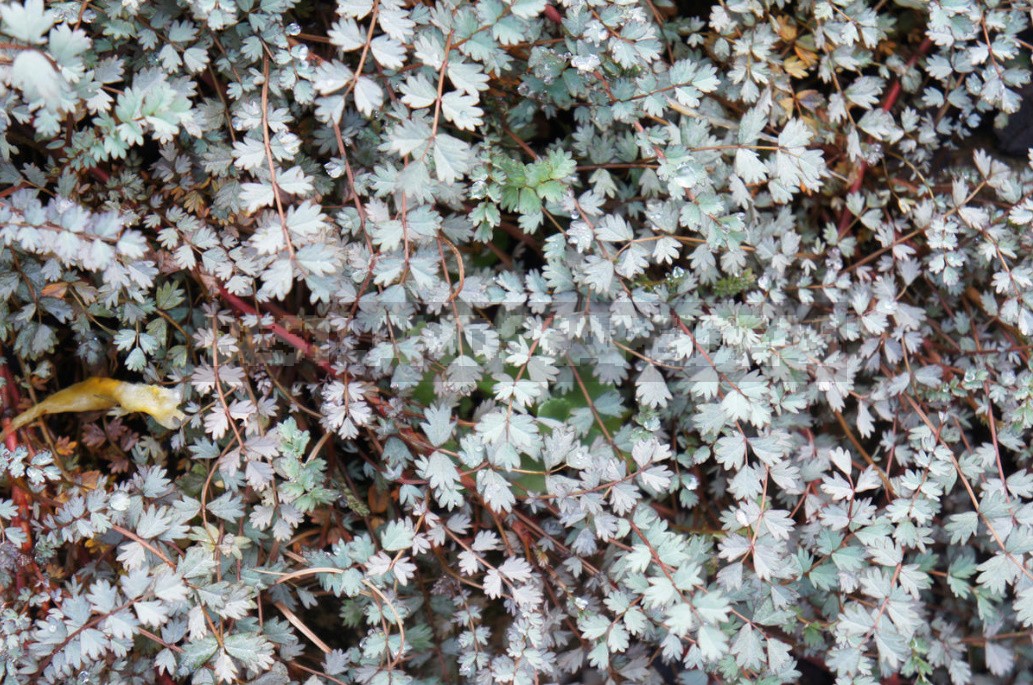
Beautiful spherical bushes Heuchera hybrida with reddish-green leaves of different shades, often with silvery spots. They will decorate any rockery. Modern varieties of Heuchera have almost brown leaves — ‘Chocolate Ruffles’, ‘Palace Purple’. Silvery spots are found in ‘Pewter Veil’, silvery-green leaves have Heuchera ‘Prince’, yellowish – ‘Gold Strike’.
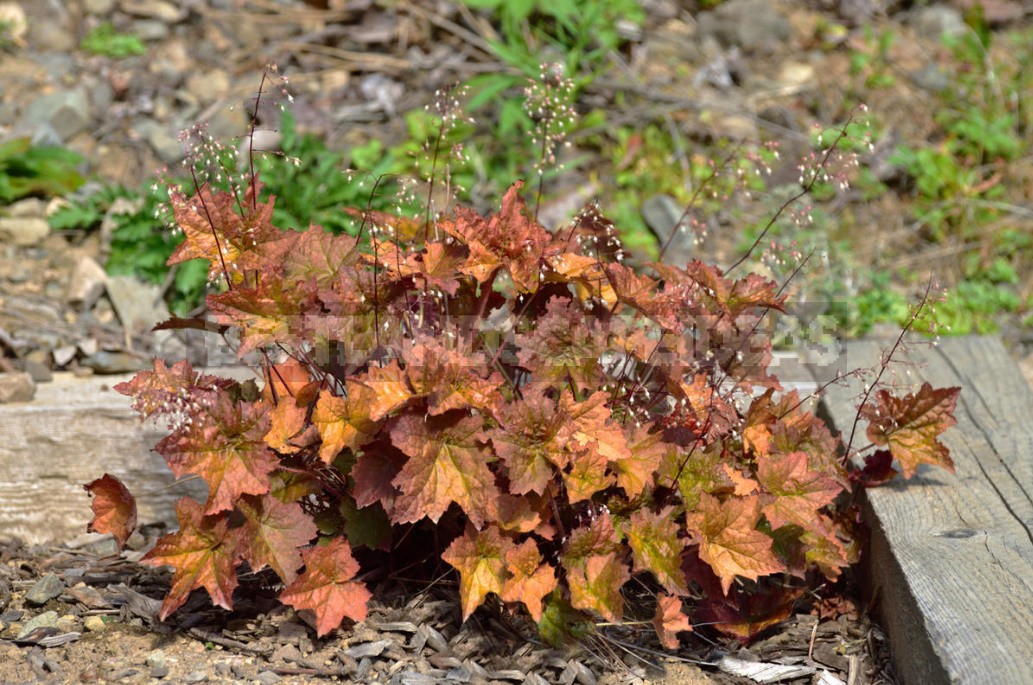
Heucherella leaves are dark red veined. Heuchera with brightly colored leaves is the best decoration of the rockery. The leaves of Ajuga reptans, Sempervivum, and Sedum varieties are painted in reddish tones. Among the recommended plants there are varieties with Golden leaves (Heuchera) or with yellow spots on the leaves (Vinca, Thymus, etc.).
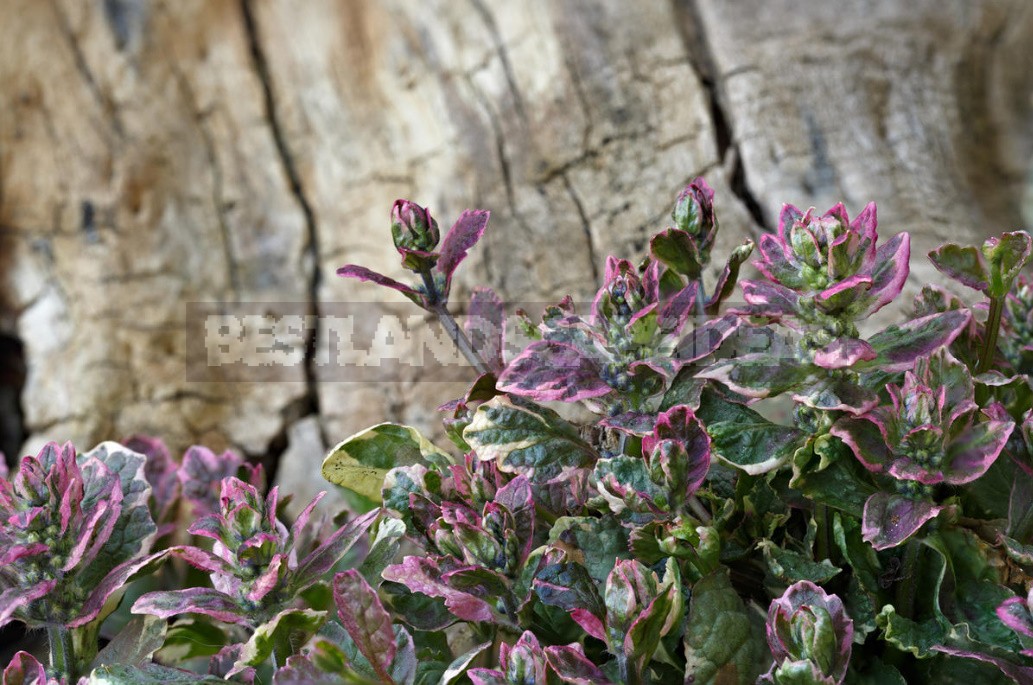
Stones and plants in rockery should be equal. In a harmonious composition, they complement each other and emphasize differences.
